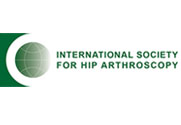Femoroacetabular Impingement
Femoroacetabular impingement (FAI) is a condition where there is too much friction in the hip joint from bony irregularities causing pain and decreased range of hip motion. The femoral head and acetabulum rub against each other creating damage and pain to the hip joint. The damage can occur to the articular cartilage (the smooth white surface of the ball or socket) or the labral tissue (the lining of the edge of the socket) during normal movement of the hip. The articular cartilage or labral tissue can fray or tear after repeated friction. Over time, more cartilage and labrum is lost until eventually the femur bone and acetabulum bone impact on one other. Bone on bone friction is commonly referred to as Osteoarthritis.
FAI impingement generally occurs as two forms: Cam and Pincer.
CAM Impingement: The Cam form of impingement is when the femoral head and neck are not perfectly round, most commonly due to excess bone that has formed. This lack of roundness and excess bone causes abnormal contact between the surfaces.
PINCER Impingement: The Pincer form of impingement is when the socket or acetabulum rim has overgrown and is too deep. It covers too much of the femoral head resulting in the labral cartilage being pinched. The Pincer form of impingement may also be caused when the hip socket is abnormally angled backwards causing abnormal impact between the femoral head and the rim of the acetabulum.
Most diagnoses of FAI include a combination of the Cam and Pincer forms.
Symptoms of FAI
Symptoms of femoroacetabular impingement can include the following:
- Groin pain associated with hip activity
- Complaints of pain in the front, side or back of the hip
- Pain may be described as a dull ache or sharp pain
- Patients may complain of a locking, clicking, or catching sensation in the hip
- Pain often occurs to the inner hip or groin area after prolonged sitting or walking
- Difficulty walking uphill
- Restricted hip movement
- Low back pain
- Pain in the buttocks or outer thigh area
Risk Factors
A risk factor is something that is likely to increase a person’s chance of developing a disease or condition. Risk factors for developing femoroacetabular impingement may include the following:
- Athletes such as football players, weight lifters, and hockey players
- Heavy labourers
- Repetitive hip flexion
- Congenital hip dislocation
- Anatomical abnormalities of the femoral head or angle of the hip
- Legg-Calves-Perthes disease: a form of arthritis in children where blood supply to bone is impaired causing bone breakdown.
- Trauma to the hip
- Inflammatory arthritis
Diagnosis<
Hip conditions should be evaluated by an Orthopaedic hip surgeon for proper diagnosis and treatment.
- Medical History
- Physical Examination
- Diagnostic studies including X-rays, MRI scans and CT Scan
Treatment Options
Conservative treatment options refer to management of the problem without surgery. Non-surgical management of FAI will probably not change the underlying abnormal biomechanics of the hip causing the FAI but may offer pain relief and improved mobility.
Conservative treatment measures
- Rest
- Activity Modification and Limitations
- Anti-inflammatory Medications
- Physical Therapy
- Injection of steroid and analgesic into the hip joint
Surgical treatment
Hip arthroscopy to repair femoroacetabular impingement is indicated when conservative treatment measures fail to provide relief to the patient. Hip arthroscopy is a surgical procedure in which an arthroscope is inserted into the hip joint to assess and repair damage to the hip. Hip arthroscopy is performed in a hospital operating room under general or regional anesthesia depending on you and your surgeon’s preference.
This surgery is usually performed as day surgery or outpatient surgery, enabling the patient to go home the same day. The arthroscope used in hip arthroscopy is a small fiber-optic viewing instrument made up of a tiny lens, light source and video camera. The surgical instruments used in arthroscopic surgery are very small (only 3 or 4 mm in diameter), but appear much larger when viewed through an arthroscope.
The television camera attached to the arthroscope displays the image of the joint on a television screen, allowing the surgeon to look throughout the hip joint. The surgeon can then determine the amount or type of injury, and then repair or correct the problem as necessary.
In arthroscopic repair of FAI, your surgeon may perform the following procedures:- Chondroplasty: This refers to surgery to repair torn cartilage or a torn labrum. Sutures are used to reattach the torn labrum or cartilage.
- Microfracture: This involves drilling holes into bare bone where cartilage is missing to promote the formation of new cartilage.
- Labral/Cartilage debridement: This type of debridement refers to cutting out and removing pieces of torn or frayed labrum or cartilage.
- FAI decompression: This involves removing any pressure areas, such as bony bumps, causing the impingement.
- Osteoplasty: This refers to a surgical procedure to modify or alter the shape of a bone.
For FAI surgery, your surgeon will use a special instrument called a shaver to cut away or debride any frayed cartilage. If the labrum is torn, your surgeon will use sutures to preserve and reattach the labrum.
Any bony bumps present contributing to the impingement will also be shaved away and smoothed. Your surgeon may drill holes in bone that has no cartilage covering it. This technique is called microfracture and stimulates the formation of new cartilage.
Once your surgeon is satisfied with the results, the instruments and arthroscope are removed from the portals. The portals (incisions) are then closed by suturing or by tape.
Arthroscopic repair of FAI, offers several advantages to the patients and they include:
- Smaller incisions
- Minimal soft tissue trauma
- Less pain
- Faster healing time
- Lower infection rate
- Less scarring
- Earlier mobilization
- Usually performed as outpatient day surgery
As with any major surgery there are potential risks involved. The decision to proceed with the surgery is made because the advantages of surgery outweigh the potential disadvantages. It is important that you are informed of these risks before the surgery takes place. Complications can be medical (general) or specific to hip arthroscopy surgery.
Medical complications include those of the anesthetic and your general well being. Almost any medical condition can occur so this list is not complete. Complications include:
- Allergic reactions to medications
- Blood loss requiring transfusion with its low risk of disease transmission
- Heart attacks, strokes, kidney failure, pneumonia, bladder infections
- Complications from nerve blocks such as infection or nerve damage
- Serious medical problems can lead to ongoing health concerns, prolonged hospitalization, or occasionally death
Complications are rare after hip arthroscopy surgery, but unexpected events can follow any operation. Please talk to your surgeon for more information on femoroacetabular impingement.












